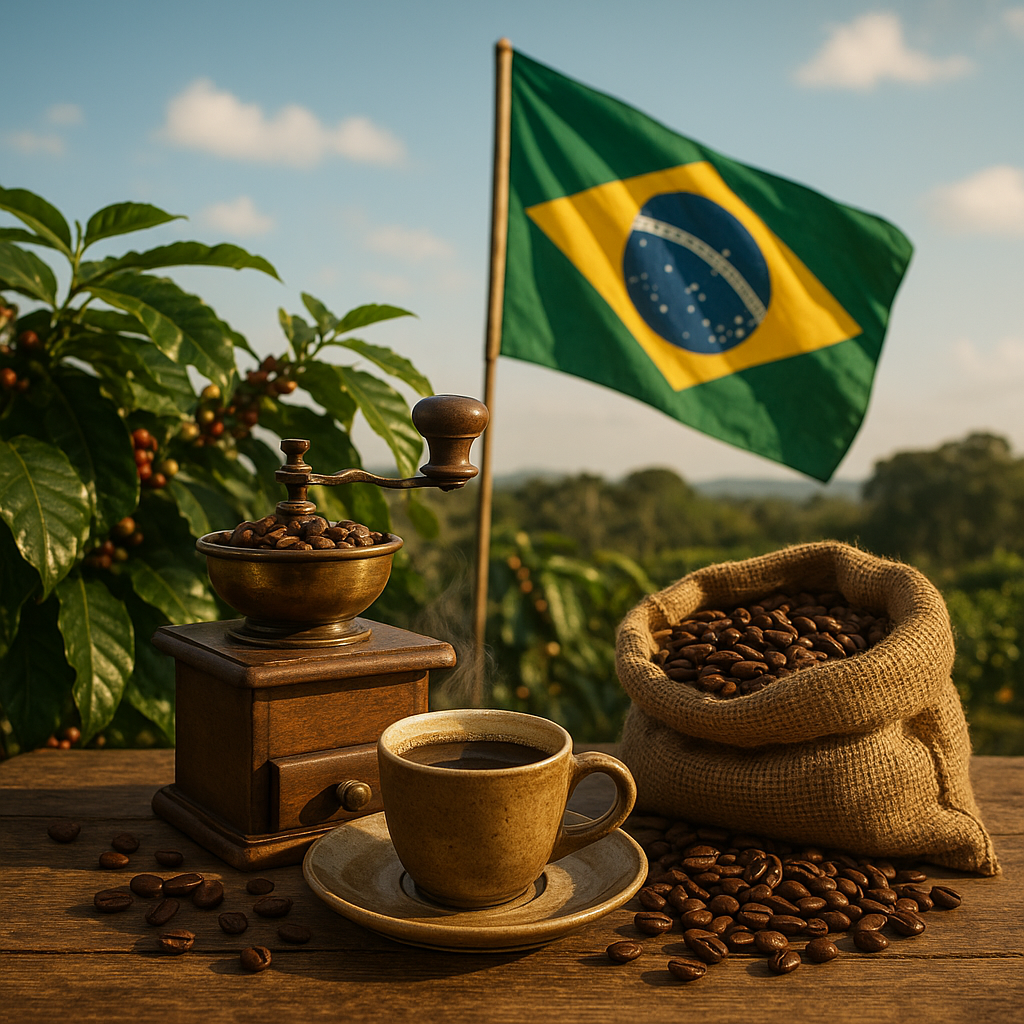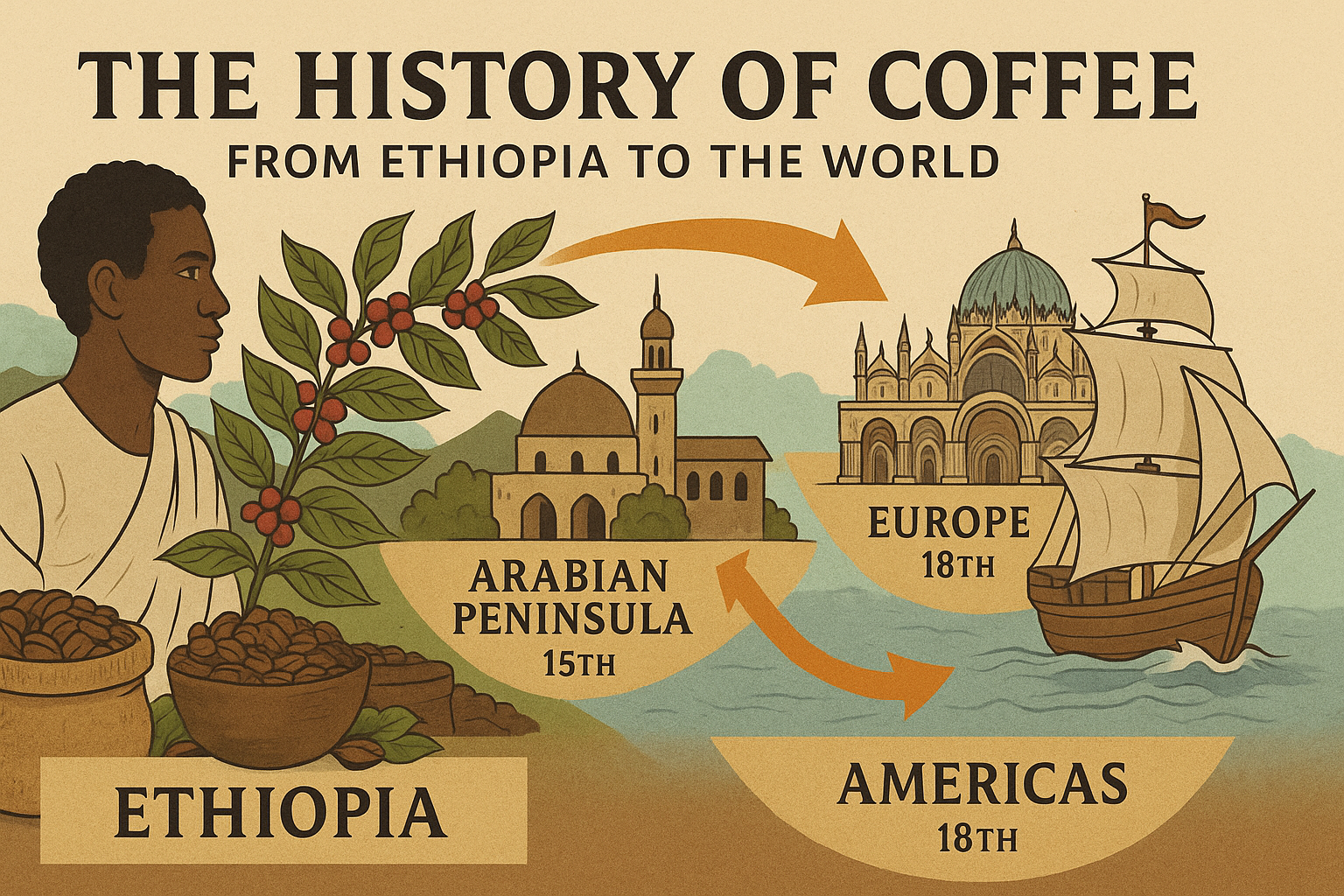Brazil is synonymous with coffee, known globally as the largest producer and exporter of this beloved beverage. However, coffee is not native to Brazil. Its introduction to the country was a result of exploration, colonization, and a bit of espionage. This article explores how coffee made its way to Brazil and how it shaped the nation’s economy and culture.
The Global Expansion of Coffee Cultivation
By the 17th century, coffee had spread from Ethiopia to the Arab world and then to Europe. European colonial powers recognized coffee’s economic potential and sought to cultivate it in their overseas territories. The Dutch pioneered this effort by successfully growing coffee in Java, Indonesia.
The French and Portuguese soon followed, introducing coffee to their colonies in the Caribbean and South America. Brazil, a Portuguese colony at the time, emerged as a promising site for coffee cultivation due to its favorable tropical climate and vast expanses of fertile land.
The Legend of Francisco de Melo Palheta
The romanticized story of coffee’s arrival in Brazil centers on Francisco de Melo Palheta, a Portuguese officer. In the early 18th century, Palheta was sent to French Guiana under the pretext of resolving a border dispute between the French and Portuguese colonies.
However, Palheta had a secret mission: to obtain coffee seedlings. According to legend, he charmed the wife of the French governor, and she, sympathetic to his cause (or perhaps smitten by him), gifted him a bouquet of flowers containing hidden coffee seeds. This clandestine act set the stage for Brazil’s future as a coffee powerhouse.
The First Coffee Plantations in Brazil
The first coffee seedlings arrived in Brazil around 1727, initially planted in the northern state of Pará. From there, coffee cultivation gradually expanded southward to Maranhão, Bahia, and eventually Rio de Janeiro, São Paulo, and Minas Gerais.
These southeastern regions proved ideal for coffee farming due to their rich soils and suitable climates. By the early 19th century, coffee plantations, known as fazendas, were thriving in these areas, laying the foundation for Brazil’s dominance in the global coffee market.
The Role of Slave Labor
The expansion of coffee plantations in Brazil coincided with the widespread use of African slave labor. Enslaved individuals worked under harsh conditions on the fazendas, performing the grueling tasks of planting, harvesting, and processing coffee beans.
This period of Brazil’s history is marked by profound social and economic inequalities. While coffee enriched plantation owners and fueled Brazil’s economic growth, it also perpetuated the suffering of countless enslaved people.
The Coffee Boom and Brazil’s Economic Transformation
By the mid-19th century, coffee had become Brazil’s most important export commodity, surpassing sugar. The “Coffee Boom” not only transformed Brazil’s economy but also reshaped its infrastructure and society.
The wealth generated by coffee exports funded the construction of railways, ports, and urban development, particularly in cities like São Paulo and Rio de Janeiro. This era also saw an influx of European immigrants who were recruited to work on coffee plantations following the abolition of slavery in 1888.
Brazil as the World’s Leading Coffee Producer
By the early 20th century, Brazil was firmly established as the world’s largest coffee producer—a title it maintains to this day. The country’s dominance in coffee production has influenced global coffee prices and trade policies for over a century.
Today, Brazil produces approximately one-third of the world’s coffee supply, with key growing regions including Minas Gerais, Espírito Santo, São Paulo, Bahia, and Paraná. The diversity of Brazilian coffee is vast, ranging from traditional robusta to high-quality arabica beans prized by specialty coffee markets.
The Cultural Impact of Coffee in Brazil
Coffee is deeply woven into the fabric of Brazilian culture. The “cafezinho”, a small, strong cup of coffee often sweetened with sugar, is a ubiquitous part of Brazilian hospitality. Whether at home, in the office, or at a street kiosk, offering a cafezinho is a gesture of welcome and camaraderie.
Brazil’s coffee culture also manifests in festivals, museums, and tourism. The city of Santos, home to the world’s largest coffee port, hosts the Coffee Museum, which celebrates the history and heritage of Brazilian coffee.
Sustainable Coffee Production in Brazil
In recent decades, Brazil has made strides in promoting sustainable and ethical coffee production. Many Brazilian coffee farms now adhere to environmental standards and participate in certification programs such as Rainforest Alliance and Fair Trade.
These initiatives aim to balance economic growth with environmental conservation and social responsibility, ensuring that Brazil’s coffee industry remains viable for future generations.
Fun Facts About Brazilian Coffee
- Brazil’s Minas Gerais region produces some of the world’s finest specialty coffees.
- The country’s largest coffee-producing city is Varginha, known as the “capital of coffee.”
- Brazil is the only country that produces significant quantities of both arabica and robusta beans.
- The Santos Coffee Port has been a key hub for Brazilian coffee exports since the 19th century.
The Legacy of Coffee in Brazil
The introduction of coffee to Brazil was a pivotal event that shaped the nation’s economy, society, and global identity. From a few clandestine seeds smuggled across borders to becoming a global coffee superpower, Brazil’s coffee journey is a testament to resilience, innovation, and cultural richness.
As you sip your next cup of coffee, take a moment to appreciate the remarkable story behind it—a story that continues to unfold in the lush coffee plantations of Brazil.





